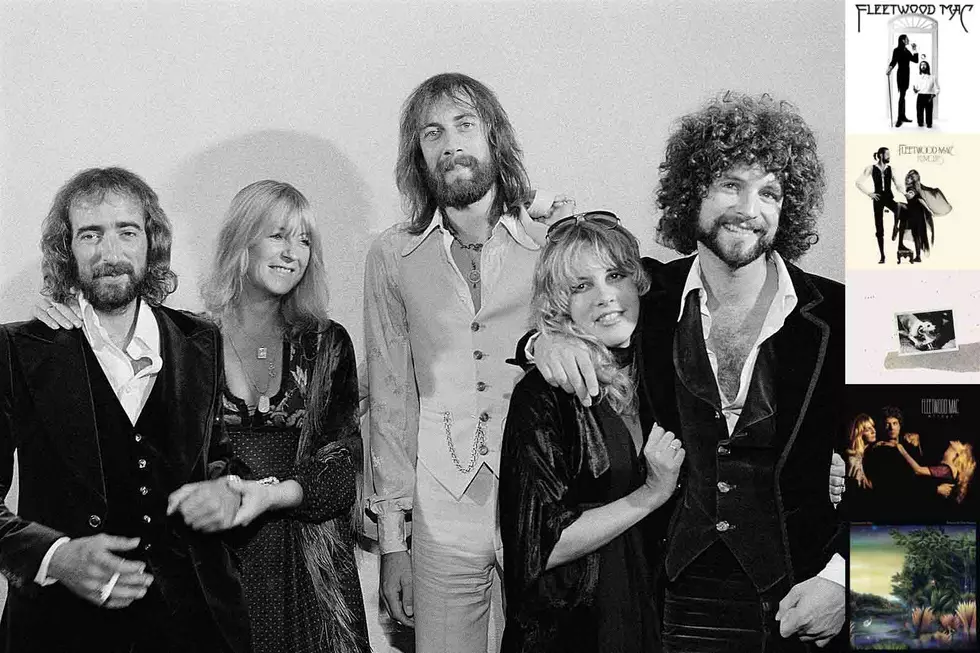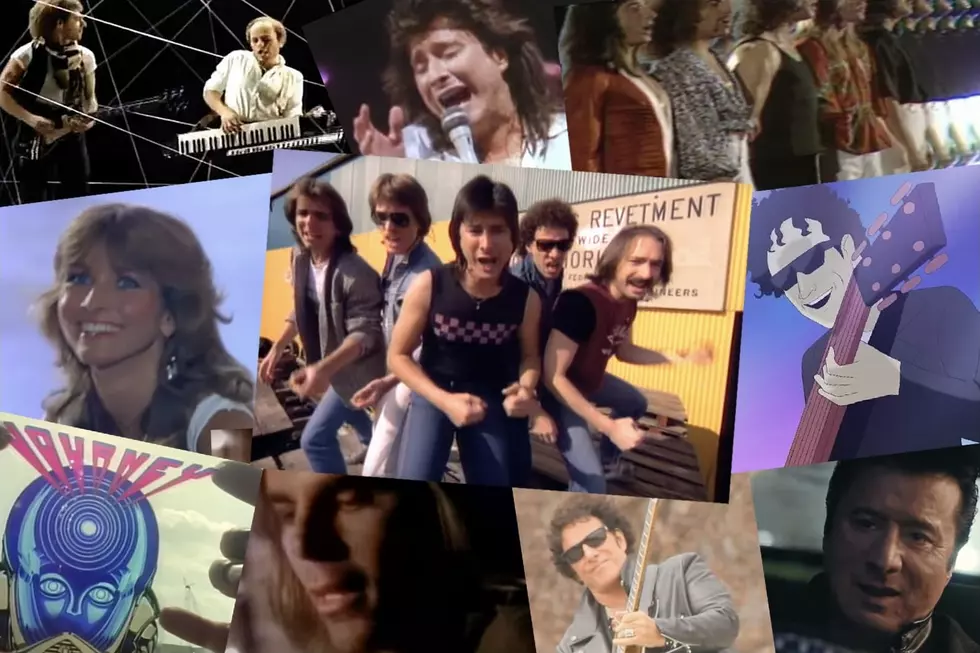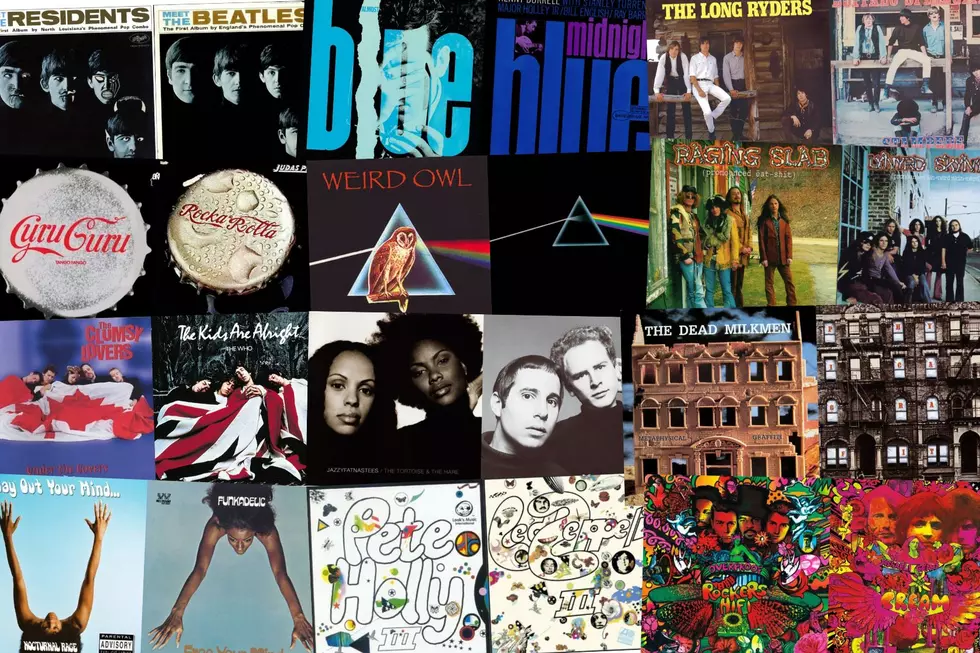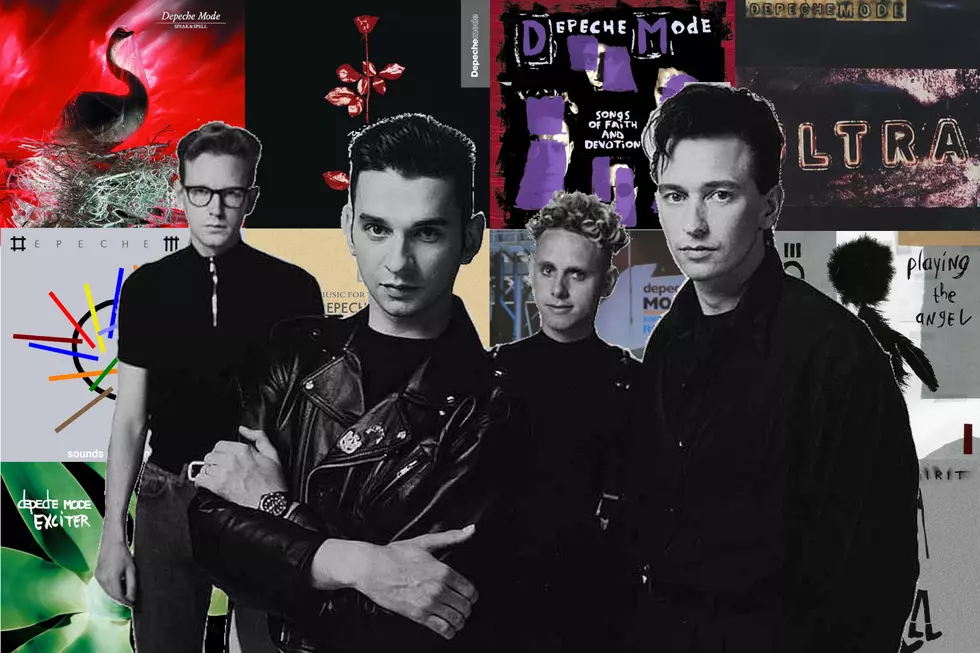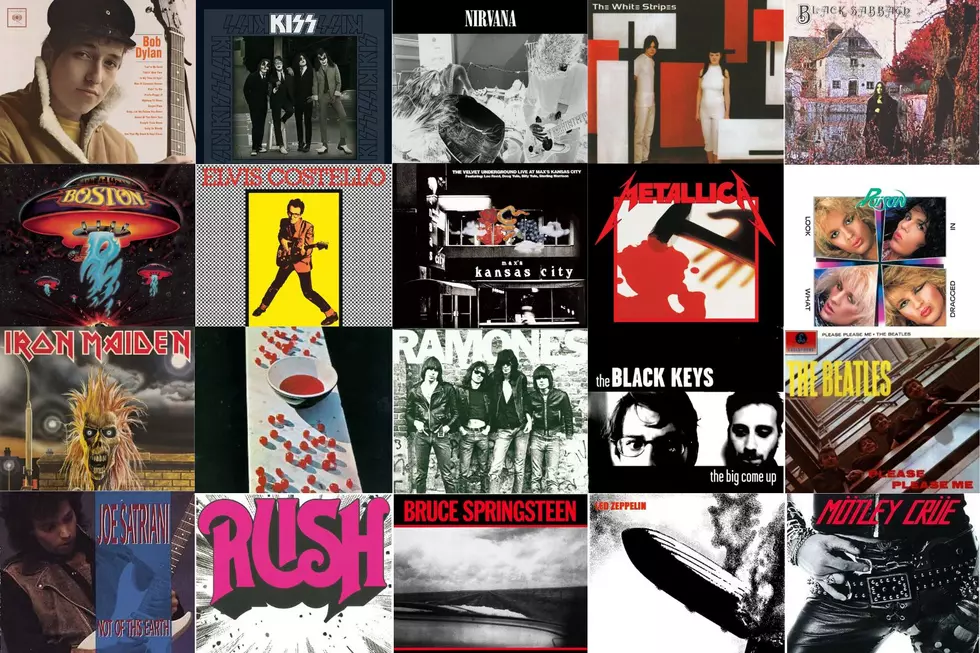
Top 10 One-Man Bands
This list of the Top 10 One-Man Bands does not include Dick Van Dyke in ‘Mary Poppins.’ No, we’re talking about musicians who have not only mastered all sorts of instruments, but played all of the parts (or almost everything) on an album. Via some recording magic, presto: a one-man band. The practice dates back to when multi-track recording became the industry standard and has included artists of all sorts, from Stevie Wonder and Prince to Dave Grohl and Trent Reznor. Of course, we are focusing on the classic rockers who gave new meaning to the term “playing with yourself.”
- 10
Phil Collins
The first of our Top 10 One-Man Bands is one of the biggest stars in pop history. For 1993’s ‘Both Sides’ solo album, Collins had such personal stories to tell in his music, he wanted to do everything (including produce) himself. He even played the bagpipes! Partially inspired by his failing second marriage, ‘Both Sides’ struck a downbeat tone, similar to the Genesis frontman’s solo debut, ‘Face Value’ (which revolved around the breakup of his first marriage). Perhaps because of its melancholy aesthetic, ‘Both Sides’ proved to be a critical and commercial disappointment. Collins (along with some of his most ardent fans) considers it one of his best works.
- 9
Emitt Rhodes
One of the many talented men swept to the periphery of pop music history, Emitt Rhodes headed up ’60s pop-rockers the Merry-Go-Round, before striking out on his own to craft power pop gems in his home studio. Inspired by Paul McCartney, Rhodes played every single instrument and sang all of the vocal parts on three baroque pop albums released in the early ’70s. Although his debut gained some attention (the song ‘Fresh as a Daisy’ hit #54 on the singles chart), Rhodes put out subsequent records to diminishing returns and ended up moving into record production. After Wes Anderson featured ‘Lullaby’ in ‘The Royal Tenenbaums’ in 2001, Rhodes has had a mini-resurgence, including being the star of a documentary (‘The One Man Beatles’) and recording new music with Richard Thompson and members of the Bangles.
- 8
Lindsey Buckingham
The Fleetwood Mac guitarist and songwriter was responsible for the vast majority of instrumentation on his first four solo albums (which span the years 1981-2006). Who can blame him for involving bandmates Mick Fleetwood and John McVie now and again? Aside from help on a track or two, Buckingham played guitar, bass, keyboards, drums and even a lap harp on those albums. Lindsey also played everything on ‘Holiday Road,’ the bouncy hit single from ‘National Lampoon’s Vacation.’ Now who wants to drive to Wally World?
- 7
Mike Oldfield
The progressive rock jack of all trades is best known for ‘Tubular Bells,’ for which he layered the sounds of more than 20 different instruments, including – of course – tubular bells. Although a few minor parts were played by others, Oldfield played nearly everything himself – guitar, piano, timpani, organ, mandolin, glockenspiel, and on and on. Perhaps even more impressive is that Virgin Records owner Richard Branson only granted him one week to complete the first half of his album-length composition, something that would have taken many lesser musicians years to tinker with. Oldfield has been creating overdubbed opuses ever since.
- 6
Roy Wood
You couldn’t do the Top 10 One-Man Bands without one of rock and roll’s great eccentrics: Roy Wood. The pop genius (known for his work with the Move, Electric Light Orchestra and Wizzard) performed nearly everything on his first two solo albums – the exceptions are a harmonium part on ‘Boulders’ (1973) and a few guest vocalists, including Phil Everly, on ‘Mustard’ (1975). Wood more than makes up for that assistance, creating strangely beautiful music by playing guitar, bass, drums, harp, banjo, saxophone, sitar, trumpet, washboard and even a bowl of water on ‘Wake Up.’ Oh, and he produced and painted the album covers, too.
- 5
Todd Rundgren
After building a name for himself as a performer, producer and engineer, Rundgren said he started to feel guilty about admonishing drummers or bassists in the studio when he had never played either before. So, for his third solo release, 1972’s ‘Something/Anything?’, he decided to tackle everything himself. Todd would begin with a drum track and then overdub other instruments on top, often creating melodies and structure on the spot. Pop-rock classics such as ‘Couldn’t I Just Tell You’ and ‘I Saw the Light’ were the result of Rundgren’s one-man experiment. He planned to record the entire double-LP that way, but when an earthquake hit Los Angeles (where he was recording), Todd beat a retreat to New York, where he recorded side four with other musicians.
- 4
Skip Spence
Some artists lose their minds in the recording studio, but Alexander “Skip” Spence wasn’t doing so hot before he laid down his solo debut. In 1968, the Moby Grape founder had been committed to Bellevue Hospital after he had attacked his bandmates with an axe while under the effects of LSD. During his six-month hospital stay, Spence wrote some songs, which he was eager to record once he was out. He was directed to a Nashville studio, where he recorded the entirety of the psychedelic landmark, ‘Oar,’ all by himself in seven days. Spence thought he was merely crafting demos, but Columbia producer David Rubinson decided to release the works as they were. The result was Columbia’s worst-selling album to date, although they 1969 release has gained notoriety over time for its rambling lyrics and haunting melodies. Sadly, due to mental illness and drug problems, Spence was never able to record a follow-up.
- 3
Steve Winwood
Before becoming one of the Top 10 One-Man Bands, Winwood spent his formative years in some great bands, including the Spencer Davis Group, Traffic and Blind Faith. When his first solo record tanked, he decided to take full creative control. On 1982’s ‘Arc of a Diver,’ Winwood sang everything, played everything, wrote all of the music, and produced, engineered and mixed the recordings – all at a studio he built on his farm. Both the album and its lead single, ‘While You See a Chance,’ became Top 10 hits and Winwood became a solo star. He tried the one-man band trick on his next record (1984’s ‘Taking Back the Night’) to lesser results. Winwood’s employed famous friends and great players on his albums since then.
- 2
John Fogerty
With the way that Creedence Clearwater Revival ended (Tom Fogerty leaving, Stu Cook and Doug Clifford demanding more creative control – against John Fogerty’s wishes), you can understand why John didn’t want to play with anyone on his next few albums. Despite the silhouetted cowboy band on the cover of 1973’s ‘The Blue Ridge Rangers,’ Fogerty’s album of country music covers was all him. Ditto his 1975 self-titled follow-up and long-time-coming 1985 smash, ‘Centerfield.’ Fogerty’s since reconciled with the idea of recording with other musicians (although not his CCR mates). He released a ‘Blue Ridge Rangers’ sequel in 2009, with a full band backing him.
- 1
Paul McCartney
Before becoming a one-man band on his solo debut, Macca had spent years as the Beatles’ not-so-secret weapon in the recording studio. Paul was as handy with a great bassline as a stinging guitar solo, a great piano part and an occasional steady drumbeat. Depressed about the breakup of his band, McCartney began crafting homemade music, overdubbing all the parts on a four-track recorder. ‘McCartney’ would feature contributions solely from Paul, with the exception of some backing vocals from then-wife Linda. When Wings ended in the late-’70s, McCartney repeated the feat with 1980’s ‘McCartney II.’ He since done it in spurts, such as ‘Young Boy’ on 1997’s ‘Flaming Pie’ – which he performed on the ‘Oprah’ show alongside three life-size video screens of Paul playing lead guitar, drums and bass.
More From Ultimate Classic Rock

